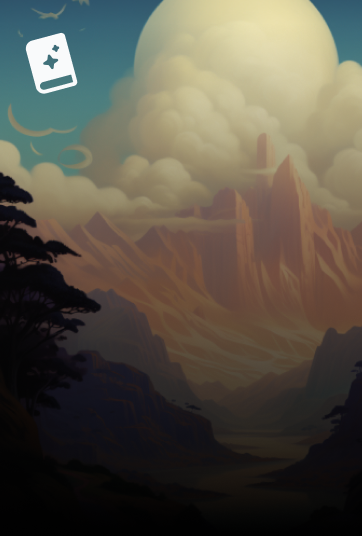

Silent Spring
Ratings37
Average rating3.8
THE CLASSIC THAT LAUNCHED THE ENVIRONMENTAL MOVEMENT
“Rachel Carson is a pivotal figure of the twentieth century…people who thought one way before her essential 1962 book Silent Spring thought another way after it.”—Margaret Atwood
Rarely does a single book alter the course of history, but Rachel Carson’s Silent Spring did exactly that. The outcry that followed its publication in 1962 forced the banning of DDT and spurred revolutionary changes in the laws affecting our air, land, and water. Carson’s passionate concern for the future of our planet reverberated powerfully throughout the world. As Carson reminds us, "In nature, nothing exists alone.”
The introduction by the acclaimed biographer Linda Lear, author of Rachel Carson: Witness for Nature, tells the story of Carson’s courageous defense of her truths in the face of a ruthless assault form the chemical industry following the publication of Silent Spring and before her untimely death.
“Wonder and humility are just some of the gifts of Silent Spring. They remind us that we, like all other living creatures, are part of the vast ecosystems of the earth of the earth…this is a book to relish: not for the dark side of human nature, but for the promise of life’s possibility.” —from the Introduction
Reviews
Popular Reviews
Reviews with the most likes.
A classic of American environmentalism. Carson writes beautifully, using everything from apt metaphors to mythological references to convey the destructiveness of the pesticides that were commonly used in her time. Additionally, she makes arguments from both a conservationist and an economic angle, which should appeal to people across the political spectrum. Silent Spring pays pronounced attention to the insect world and will remain a book of significant interest to entomology enthusiasts.
Carson goes into great scientific detail about the implications of indiscriminate pesticide use. Some of the information is timeless, such as the excellent explanation in the chapter “Elixirs of Death” of how methane is modified to produce other chemical compounds, or the overarching theme of respect for ecology. Some very specific data regarding certain animal populations in 1962, for instance, may not be as relevant to the modern reader. The book is a product of its time, and some of the language has not aged well, particularly regarding people with disabilities.
An indisputably great work, but perhaps not a conventionally “fun” one, although I don't think it has to be. While it's interesting to read about the issues of Carson's time, reading Silent Spring made me more interested in reading about contemporary environmental issues.
The capacity for humans to not think through the ramifications of their choices on the environment and destroy it without meaning to do so inspired Rachel Carson's classic Silent Spring. In it, she traces the links between the rising use of pesticides and insecticides and the devastating consequences it has had for animal life in areas where application is wide-spread. Worse yet, it often doesn't accomplish the desired effect in the long term, which just encourages even heavier use. She doesn't flinch away from the fact that humans are animals, too, and highlights the issues that can arise for the people who live in the often-rural and therefore less-seen communities where these poisons are used most significantly. And since these people frequently eat locally-sourced meat and fish, the problem of biological magnification (animals eating food that has its own level of exposure, compounding with each step up the food chain) becomes even more pressing for them.
Carson writes all of this in strong, clear prose that first explains the concepts she's introducing and then illustrates them with examples of the devastating effects of poisons that are marketed as safe and effective on life, from plants all the way up to people. She doesn't condescend and though her urgency is clear, it doesn't feel alarmist or like a scare tactic. Instead, she presents her case that we need to start paying attention and questioning what we're told rigorously but understandably. Science writing often veers into the esoteric, and this book should be used an exemplar for how to write for the popular market without getting bogged down in details or sidetracked into areas more consequential for the author than the reader.
This book's continuing relevance even after it led to the the ban of DDT, the chemical she primarily discusses, is a result of both Carson's skill as a writer and the impact her work managed to have on the public. Not only did it take DDT off the market, it blazed the path that eventually led to the creation of the Environmental Protection Agency by President Nixon. Imaging a book being so popular and espousing its cause so effectively that it led to the creation of a new federal agency in today's world seems preposterous. All of that being said, this book wasn't an unqualified success for me. After a while, her constant use of examples of a chemical being introduced and the death of wildlife that followed started to feel repetitive, blunting its impact. And I found myself a bit skeptical of the rosiness with which she portrayed the alternative option of importing predators for invasive species control...to the best of my understanding, that can have harmful side effects of its own. All in all, though, this book is readable, relevant, and worth a perusal before you go nuts with the Round-Up on the dandelions.
Top Prompts
Featured Prompt
37 books#37 in What are your favorite books about climate change and the environment?
April is Earth Month! 🌎 What fiction or nonfiction books would you recommend to readers who want to learn more about environmental issues, climate crisis, and protecting our planet?


























